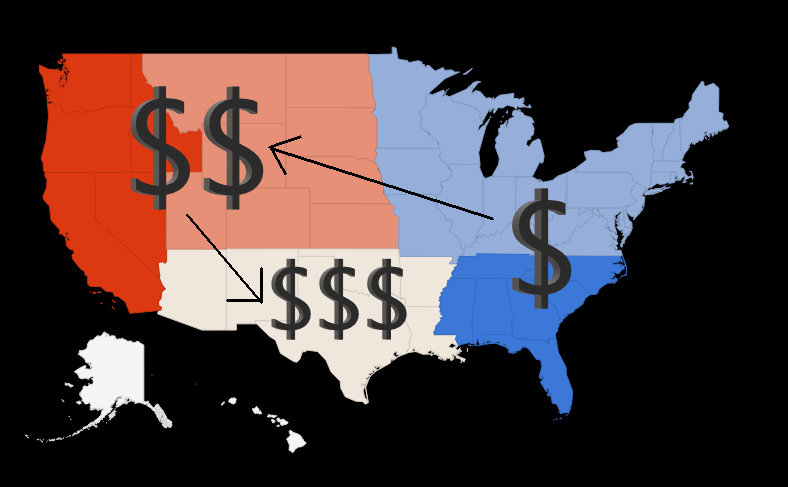There are many factors to consider that impact the valuation of a used car. Vehicle depreciation is very real in the used car market, but the make and model of the car often ensure the owner that the vehicle won’t lose too much of its value depending on the vehicle’s condition, mileage, and how well it runs. However, one variable that should not be overlooked is the geographic location. Specifically, where the car was predominantly driven. But why does this matter? Consequently, certain types of cars sell better or worse in certain US regional areas.
Weather varies throughout the US and has direct impact on your vehicle’s value. Sunlight will rob you of your car’s shine, rain initiates rust, and the presence of snow can lead to corrosion from road salt. Referring to the chart below, on average, a car from the northeast will typically sell for almost $100 less than a car from the southwest. Why? Keeping the mileage, model, and year constant, it makes sense that a sedan that spends almost a quarter of the year in New England’s harsh winters will likely have more wear than a car driven in the arid, continental climate of New Mexico, thus decreasing its value.
Advanced Remarketing Service’s Analysis of Regional Used Car Market Values
Moreover, the area you live in also contributes to the price elasticity of household demand on what type of car a typical buyer may want to purchase. Price elasticity is the economic measure of how sensitive the demand of a good is in response to changes in price. A Harvard economic publication applies this theory on selling different vehicle types in certain areas and notes its importance. The study highlights that being cognizant of the fact that there’s an advantage in selling an off-road SUV in the used car market of Colorado, where there’s a higher demand for these types of cars, will then allow the seller to utilize price leveraging, and in turn, require the buyer to adjust the price they’re willing to pay.
In sum, the make and model, year, mileage, and condition of used vehicles are very significant pricing factors – but the area the car is driven in is certainly something to assess next time you’re in the used car market.

